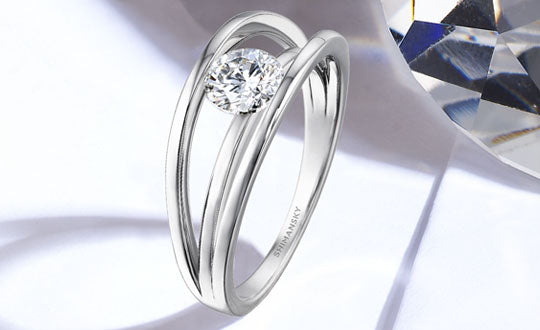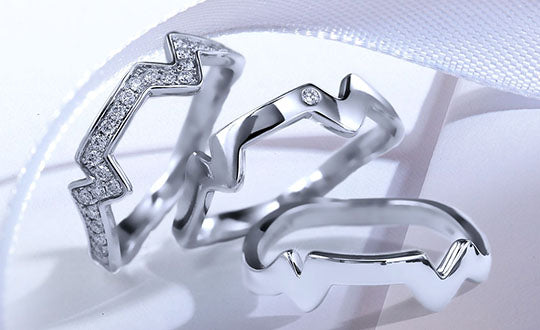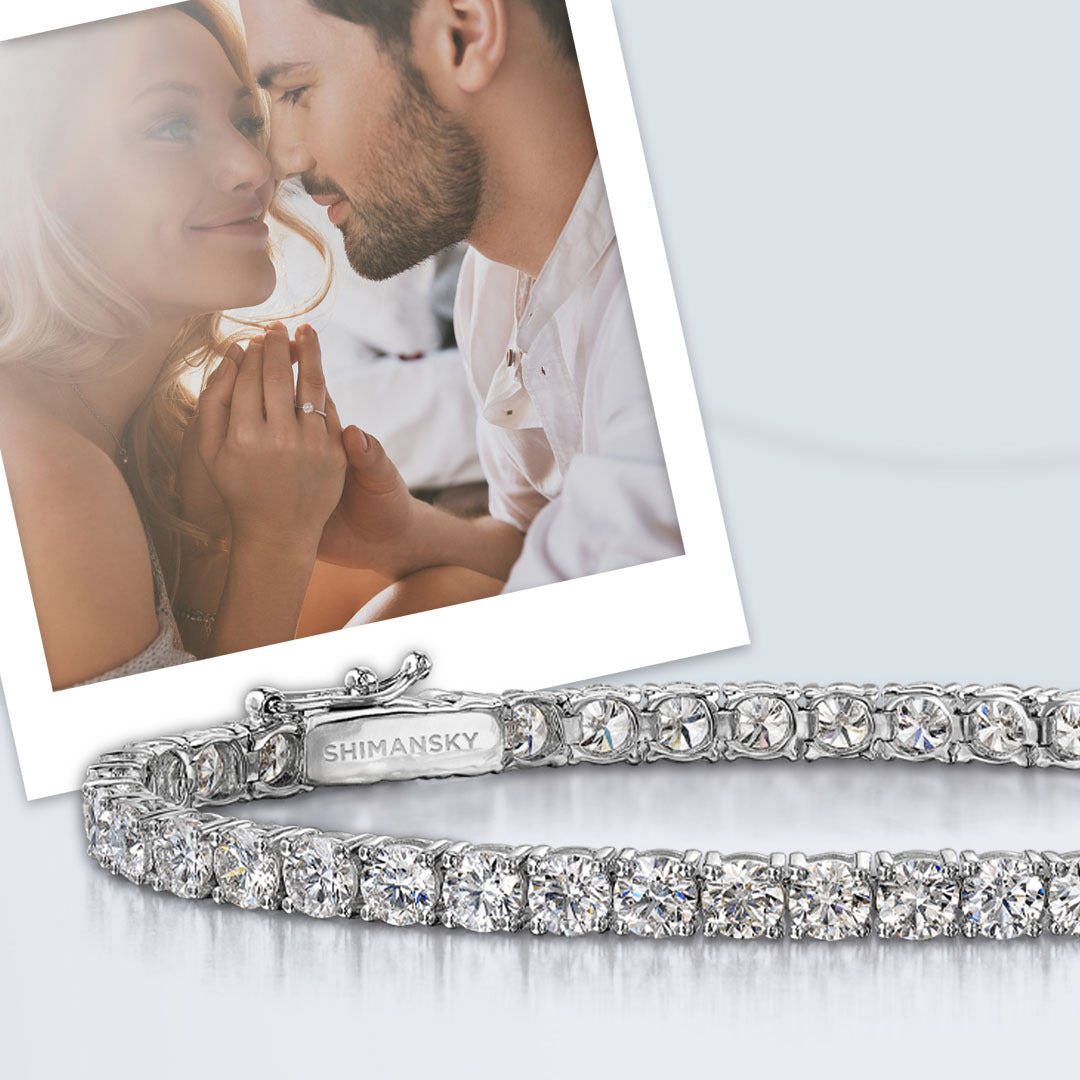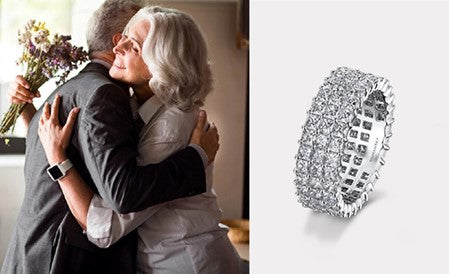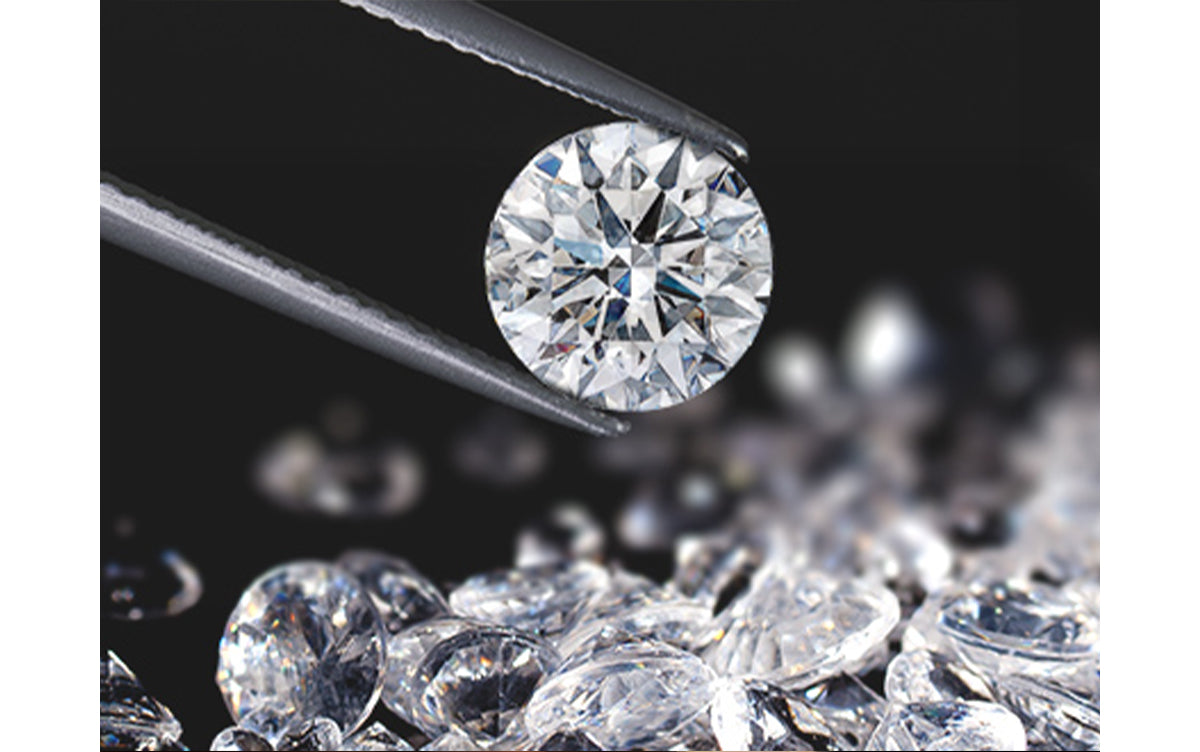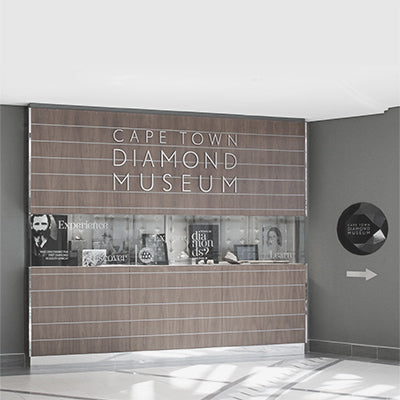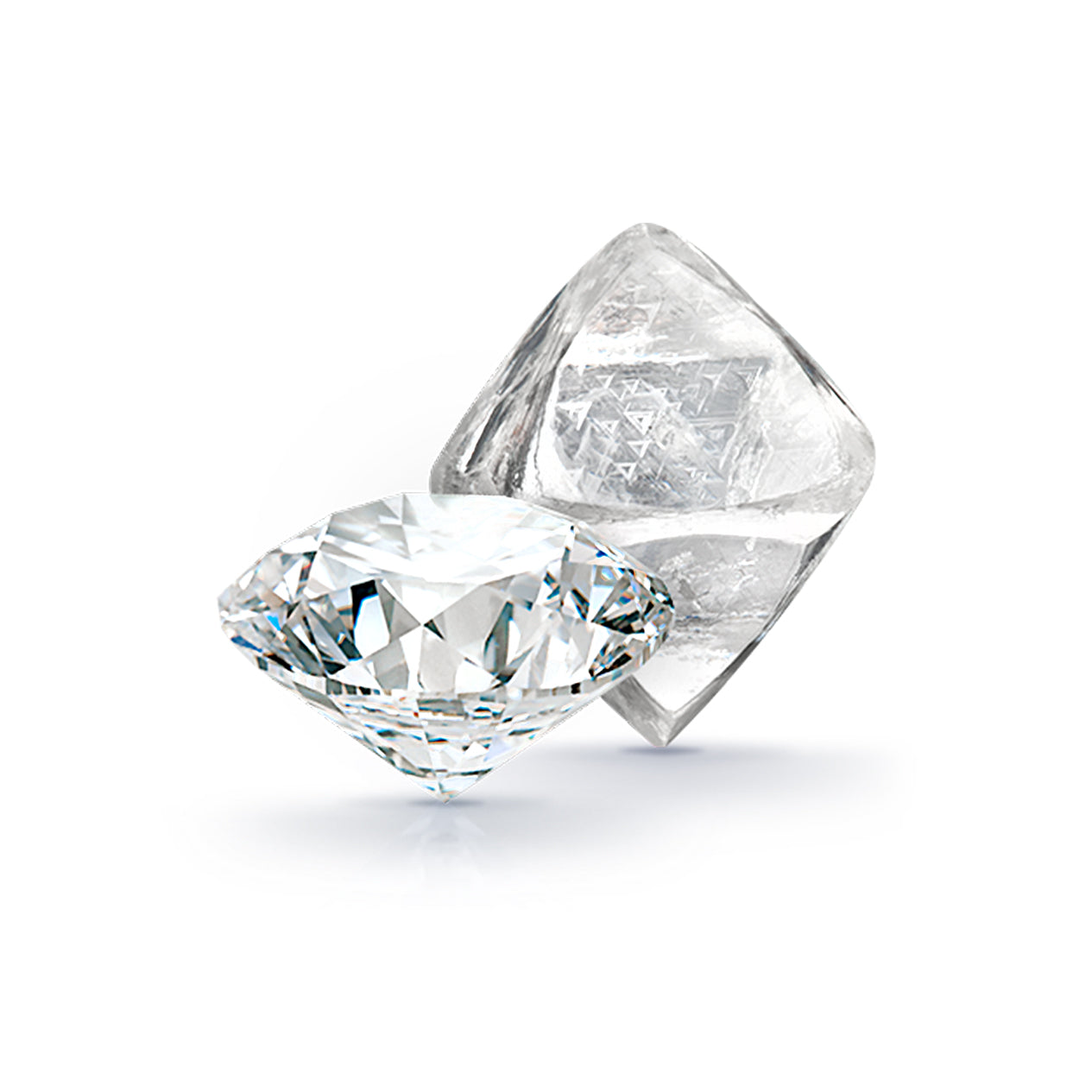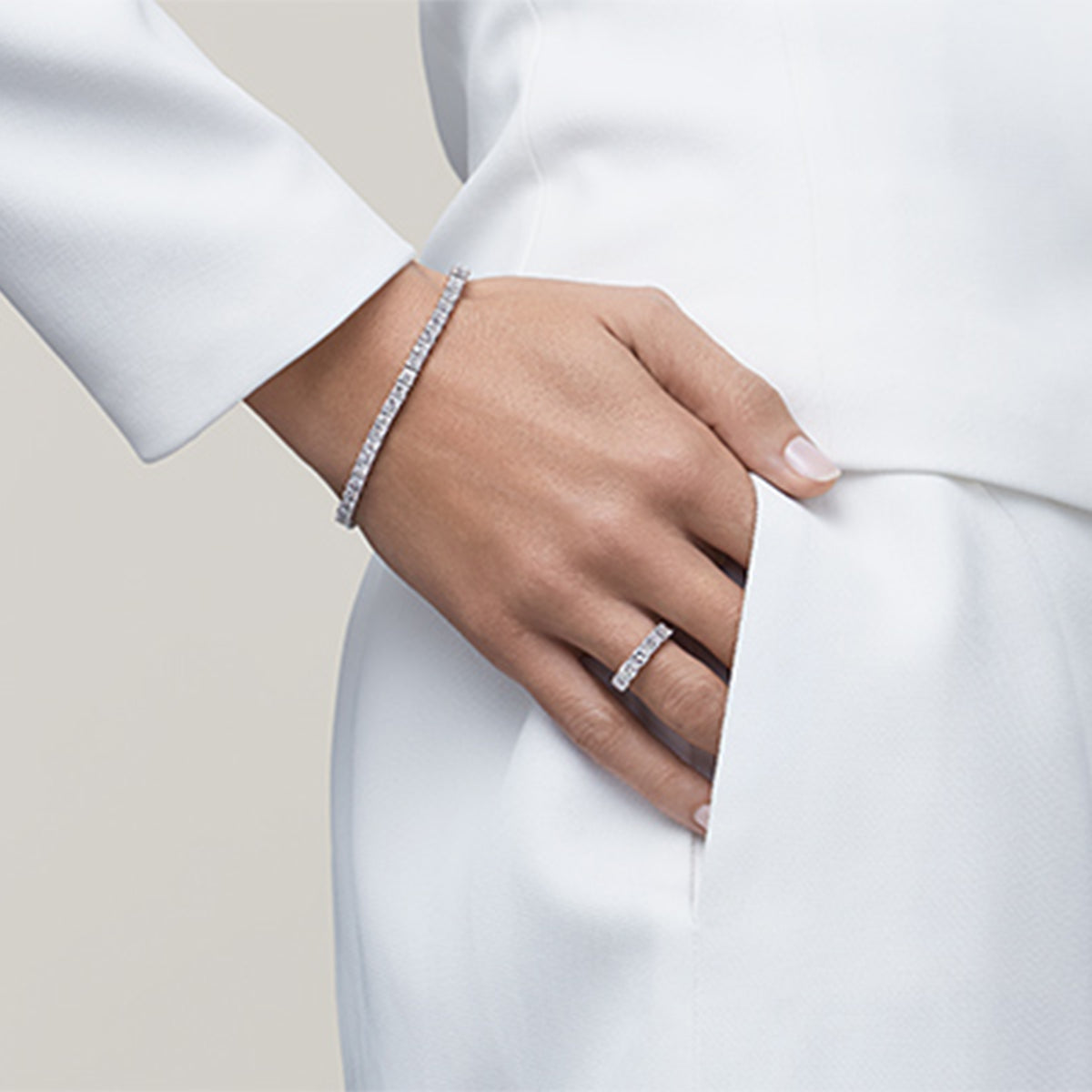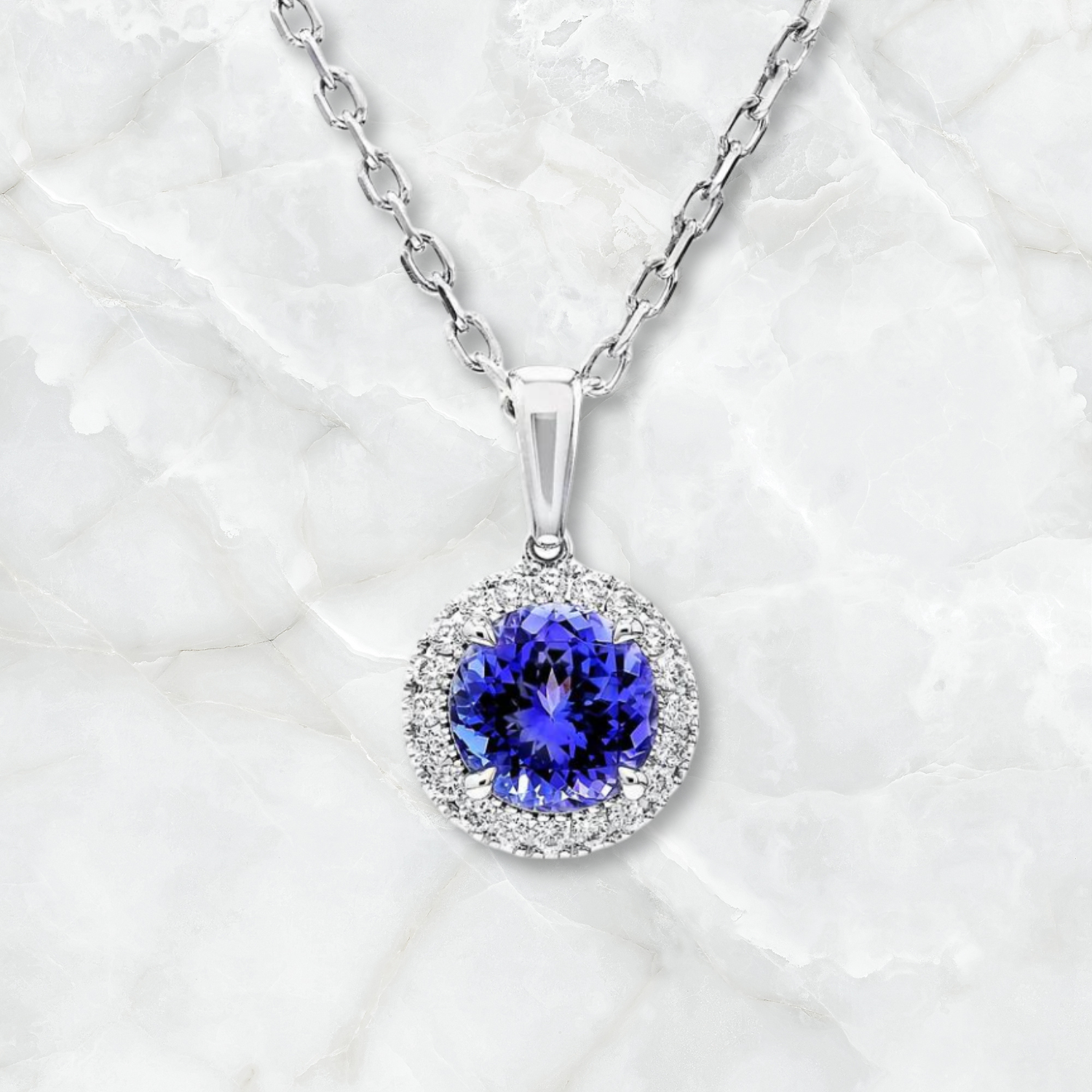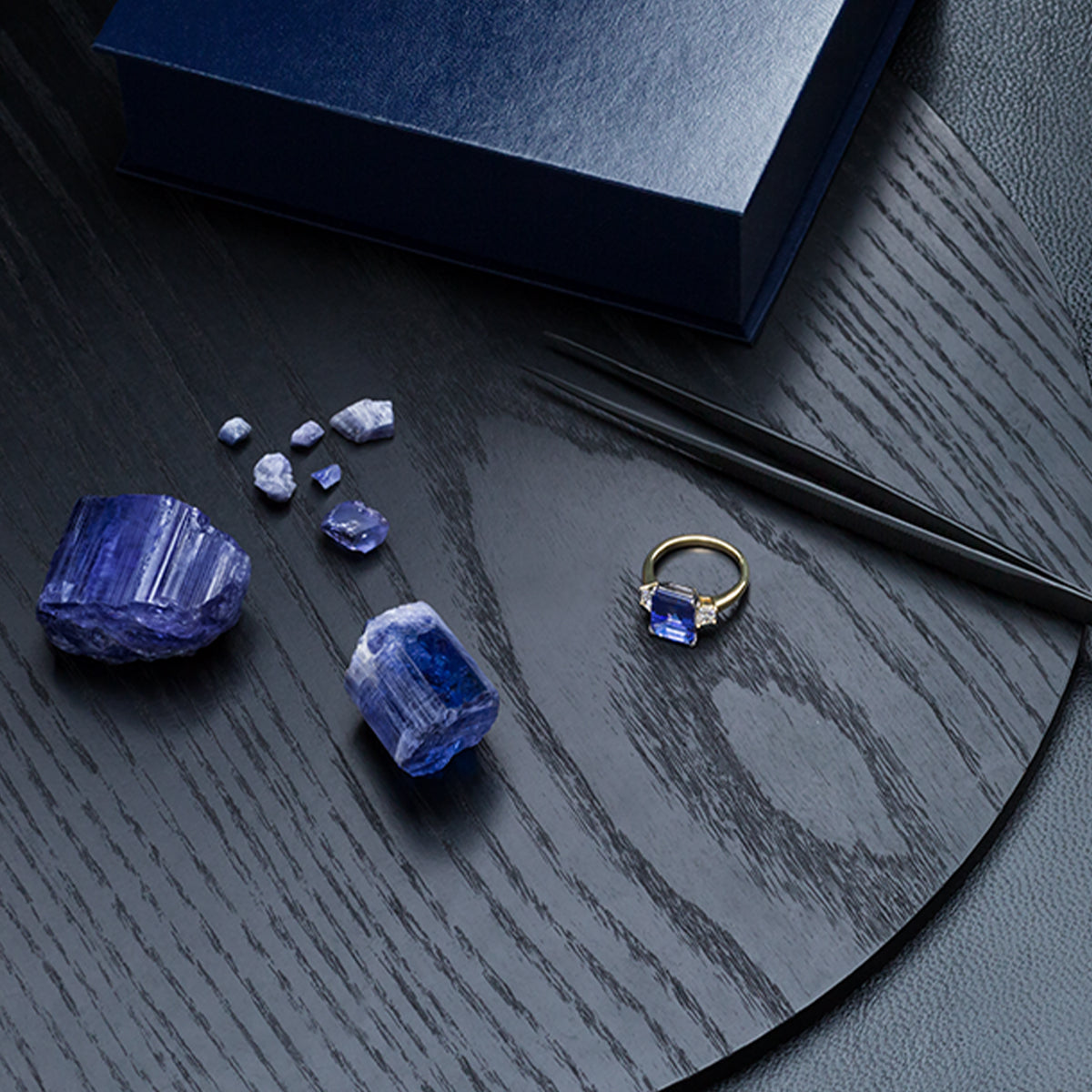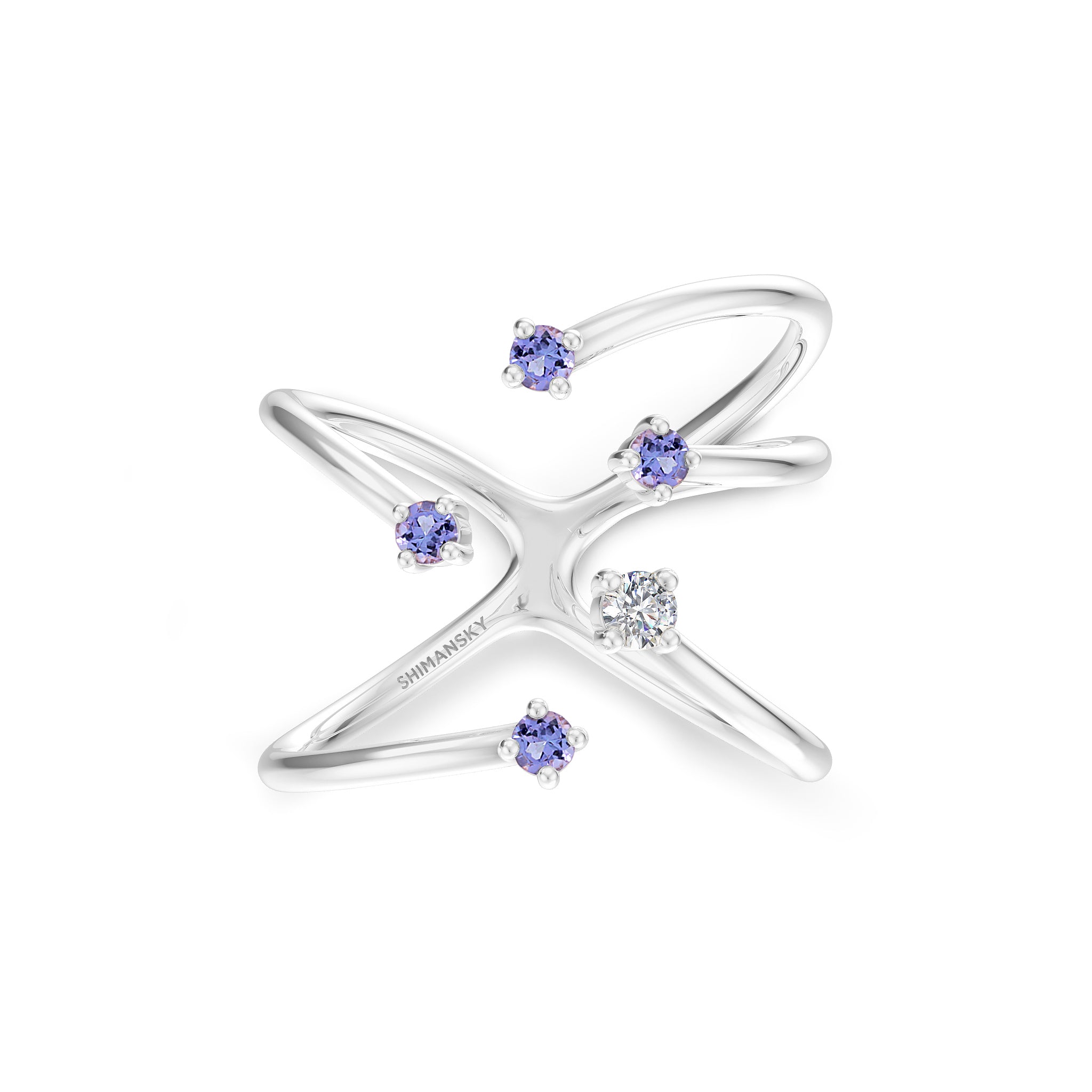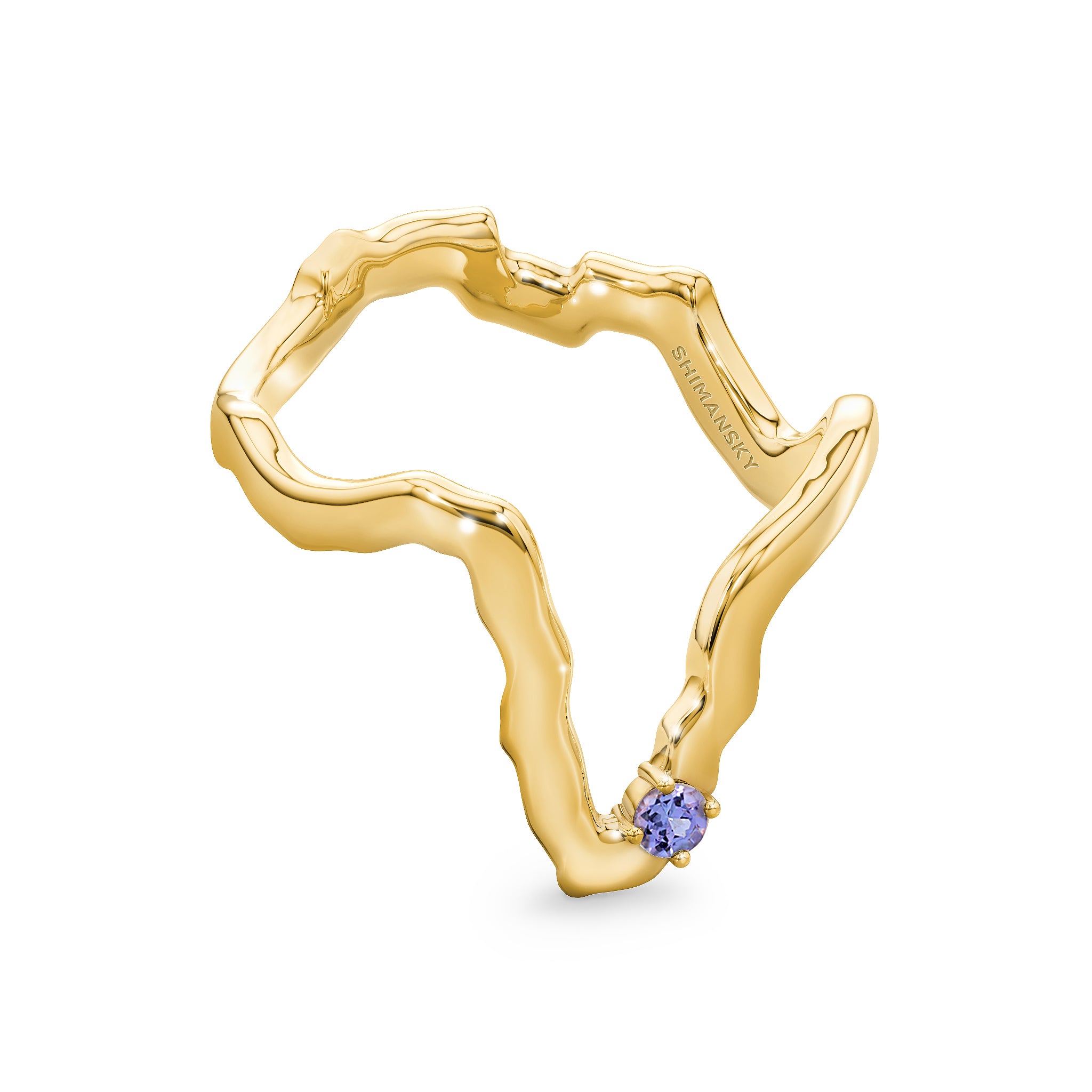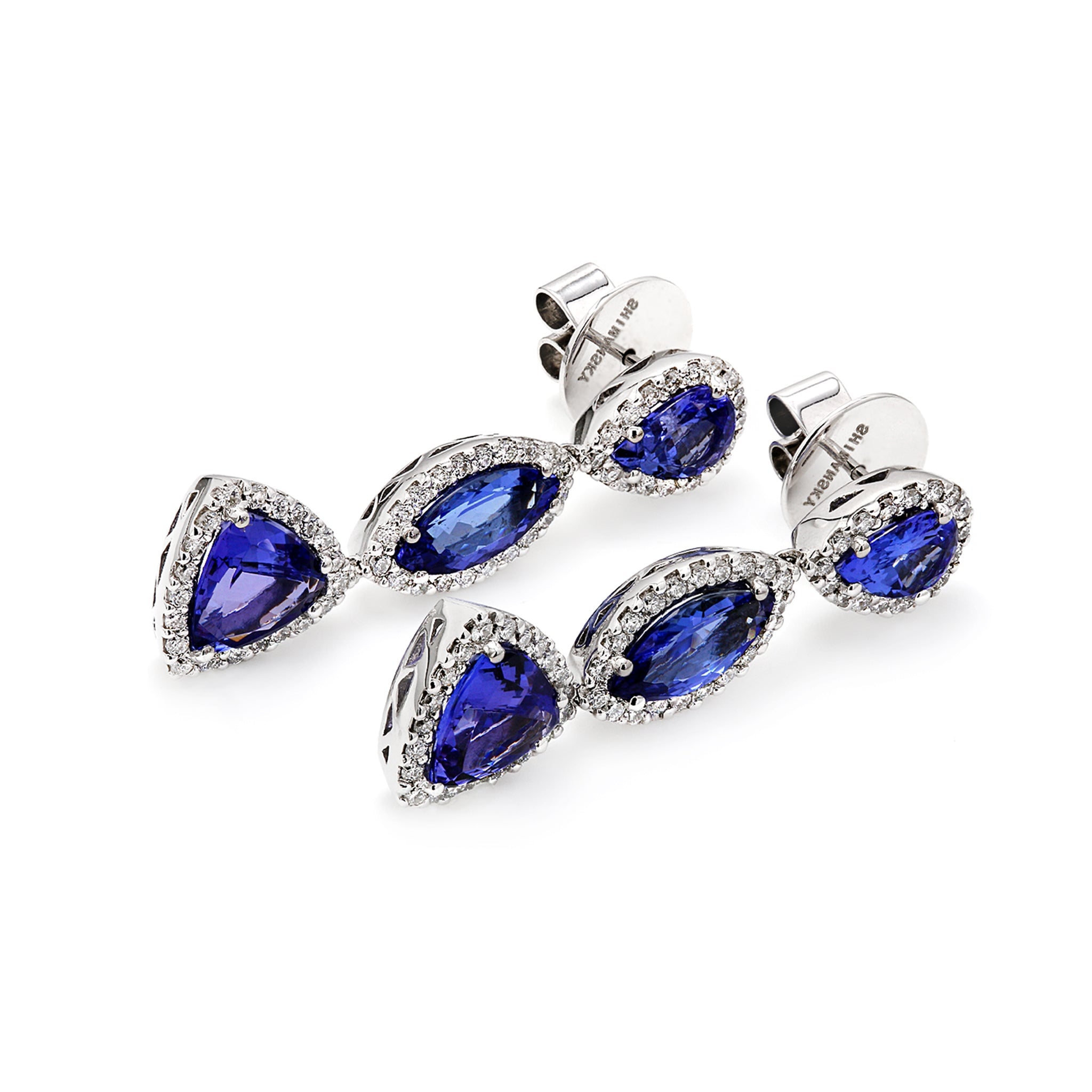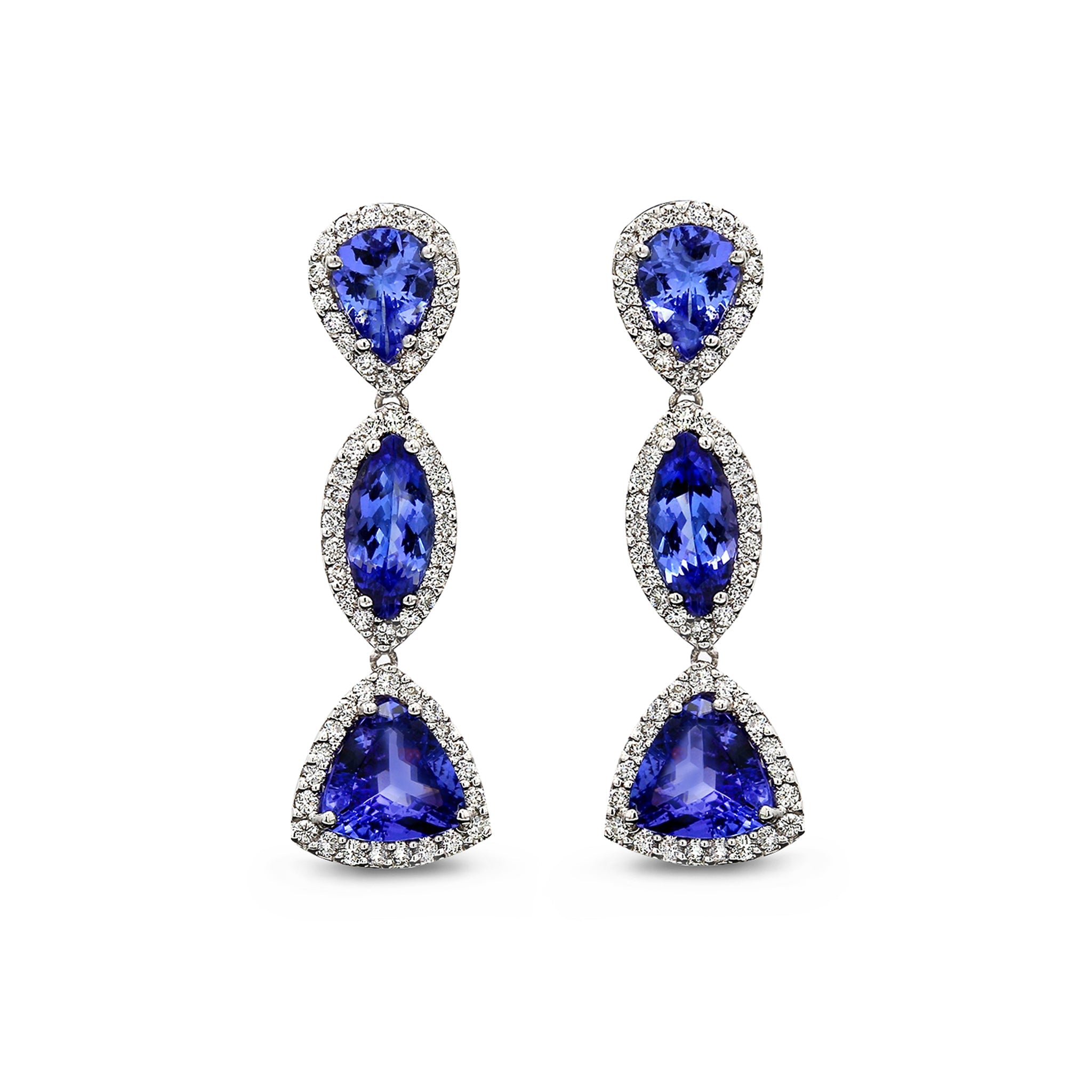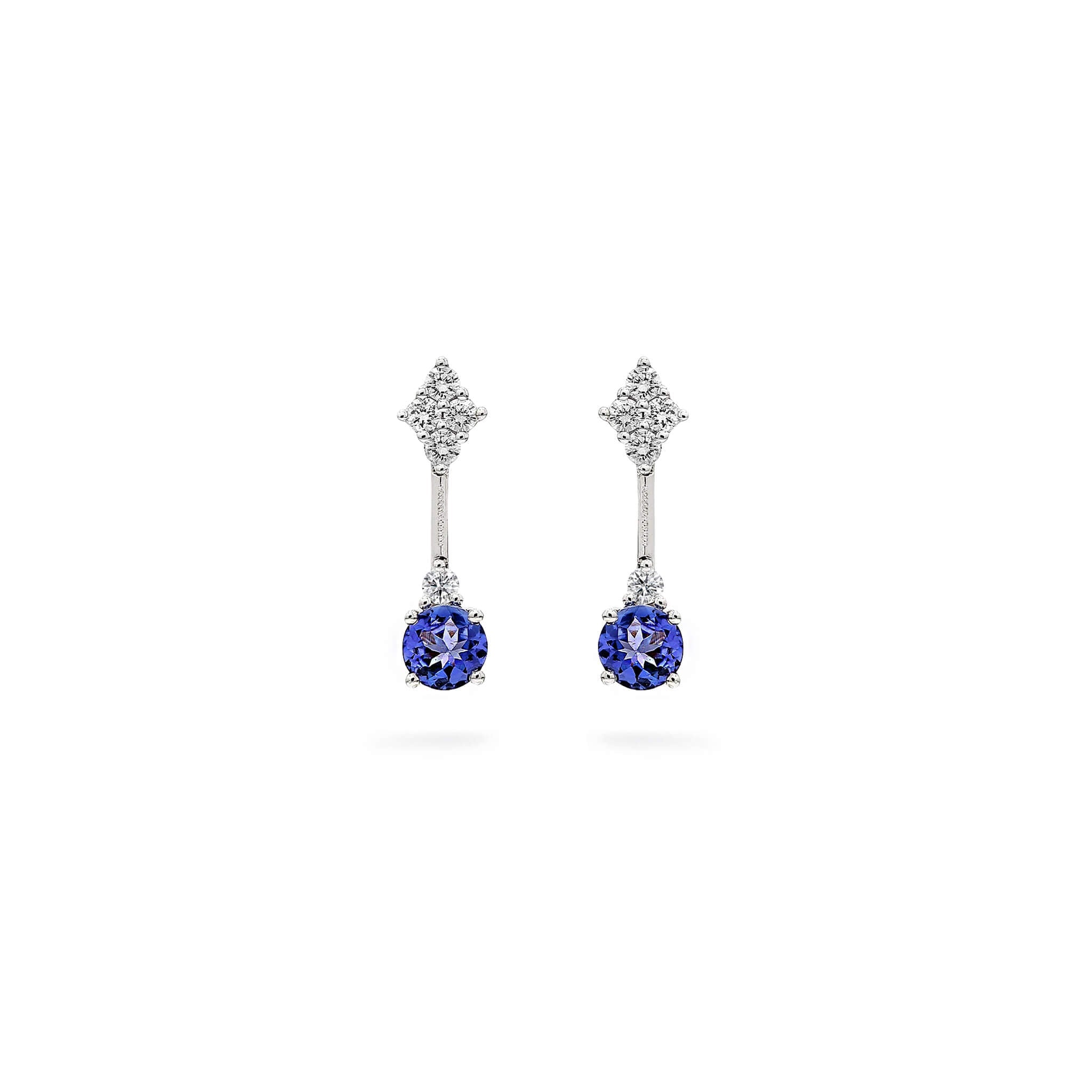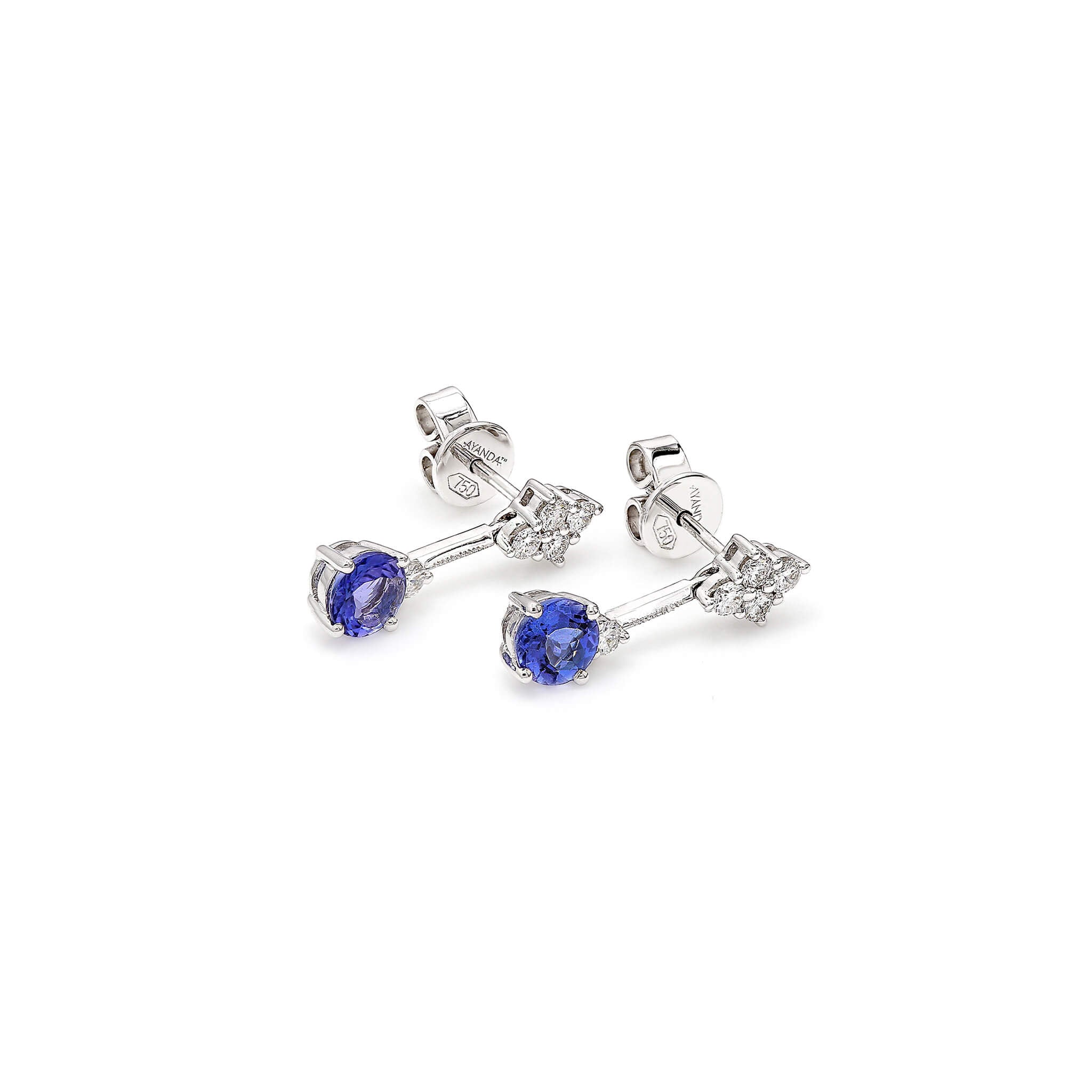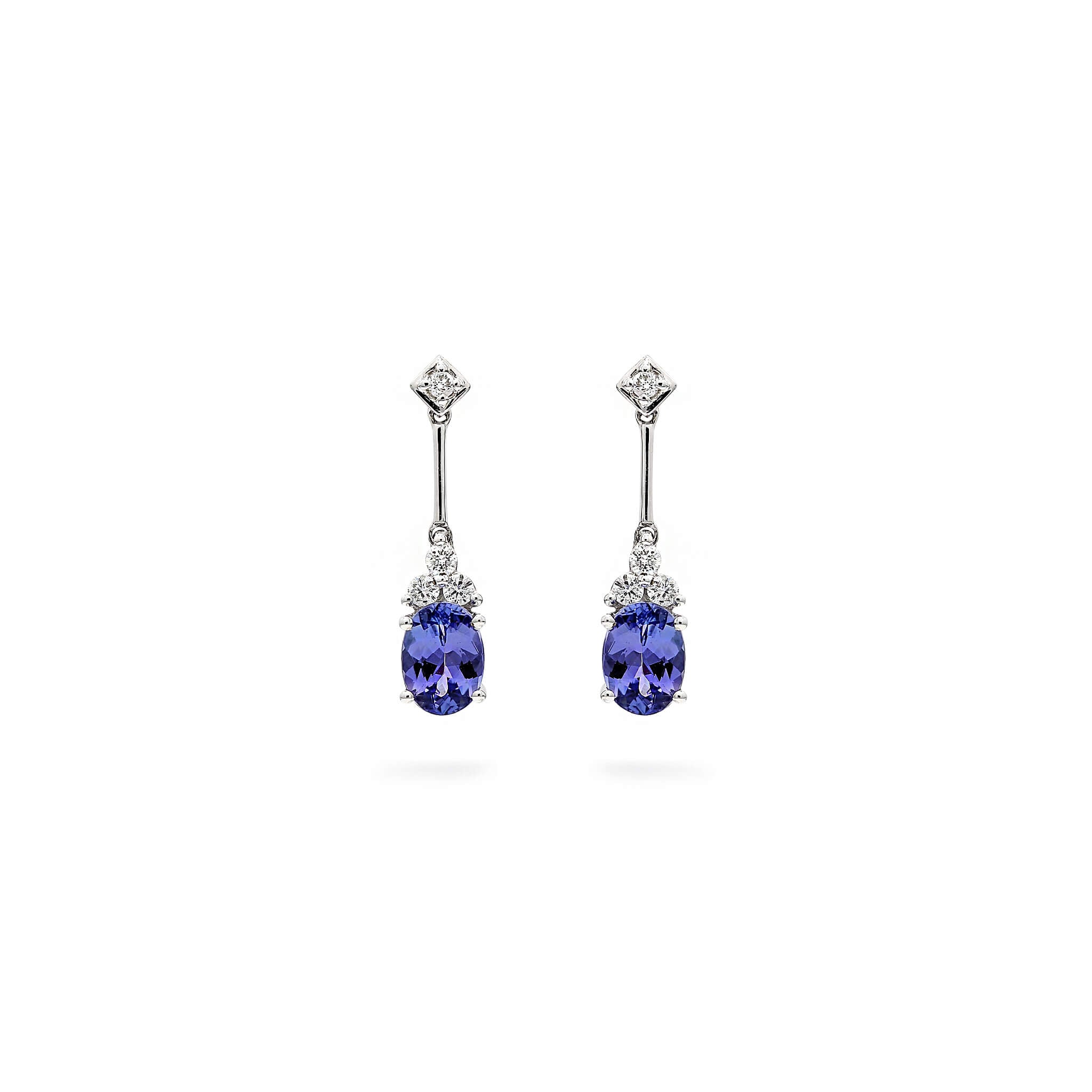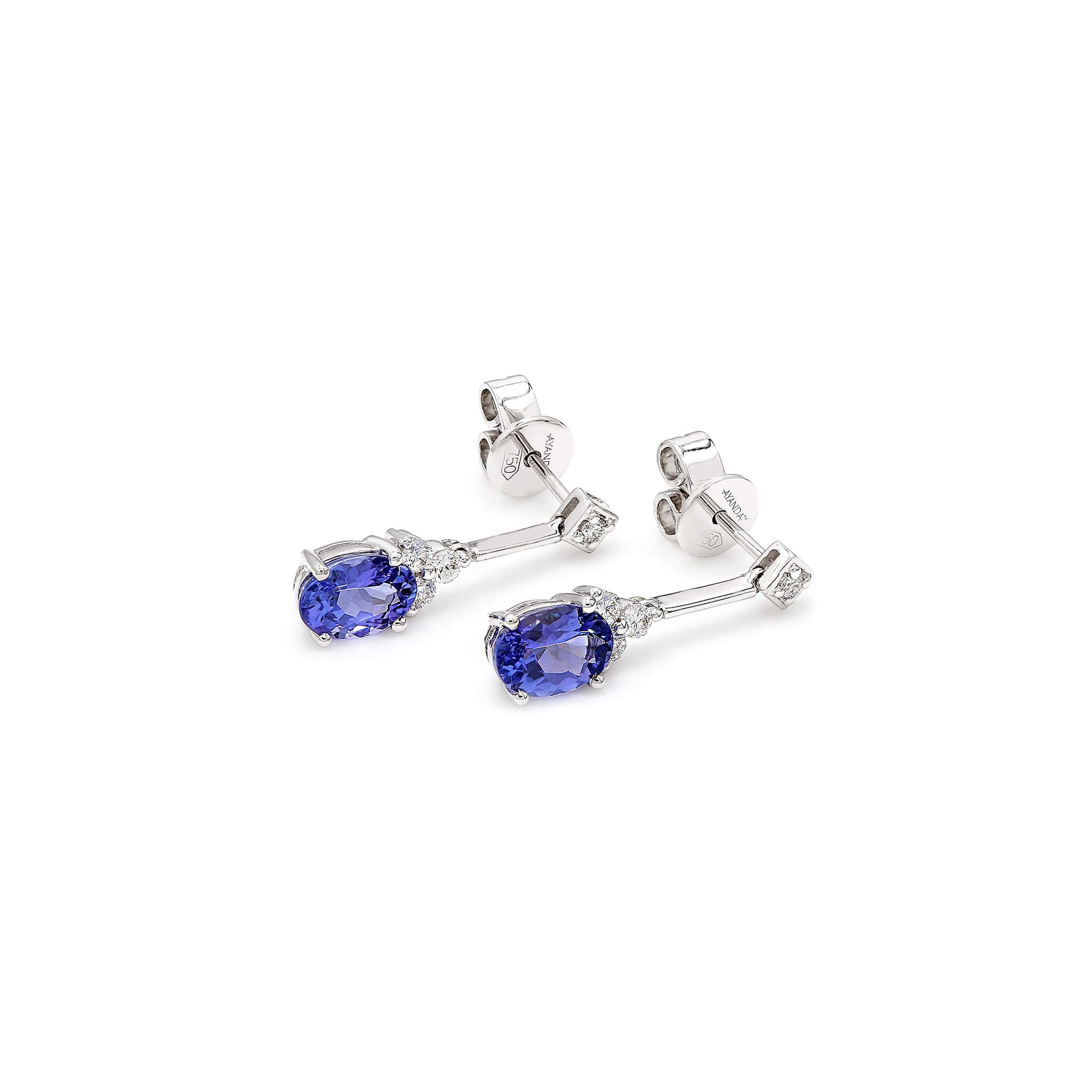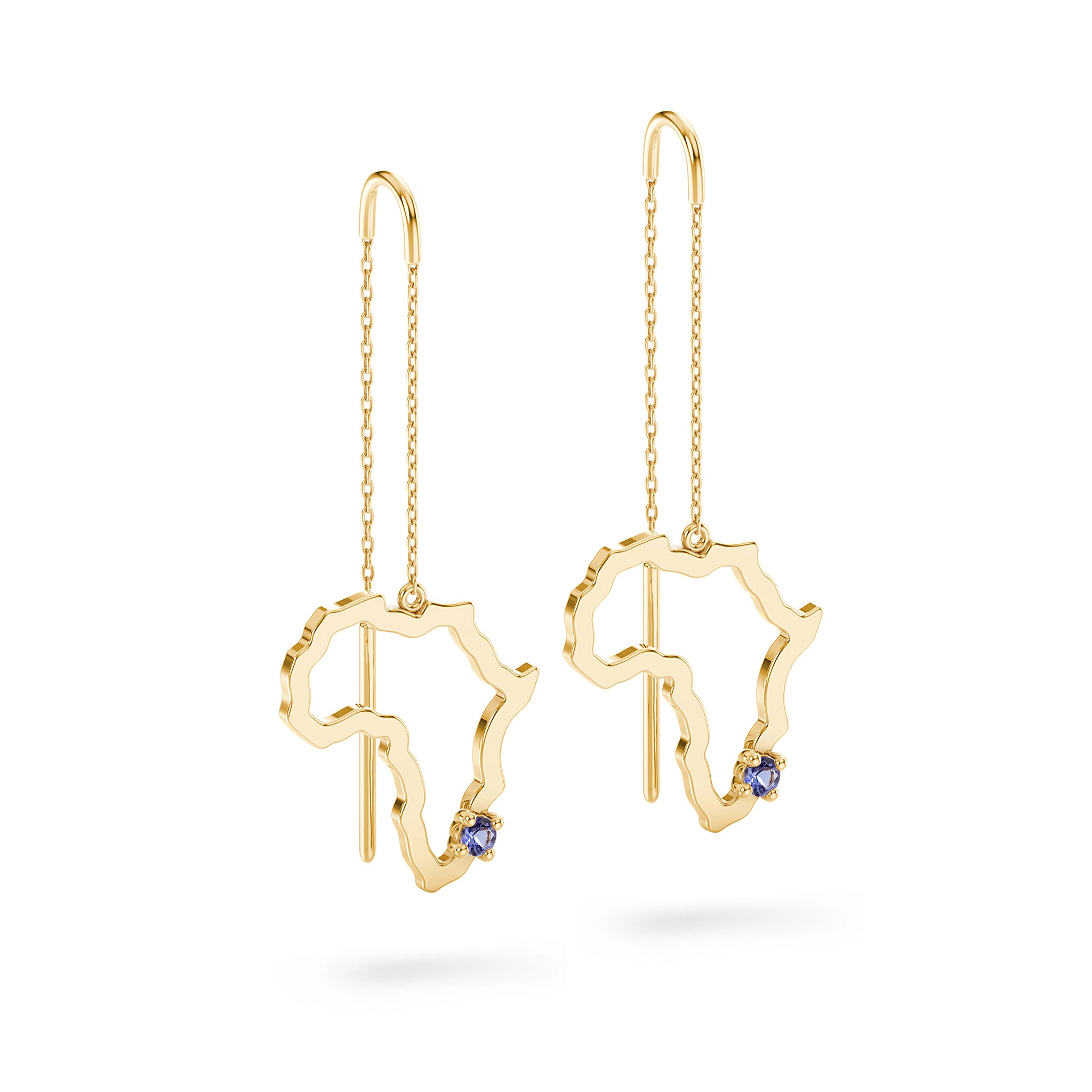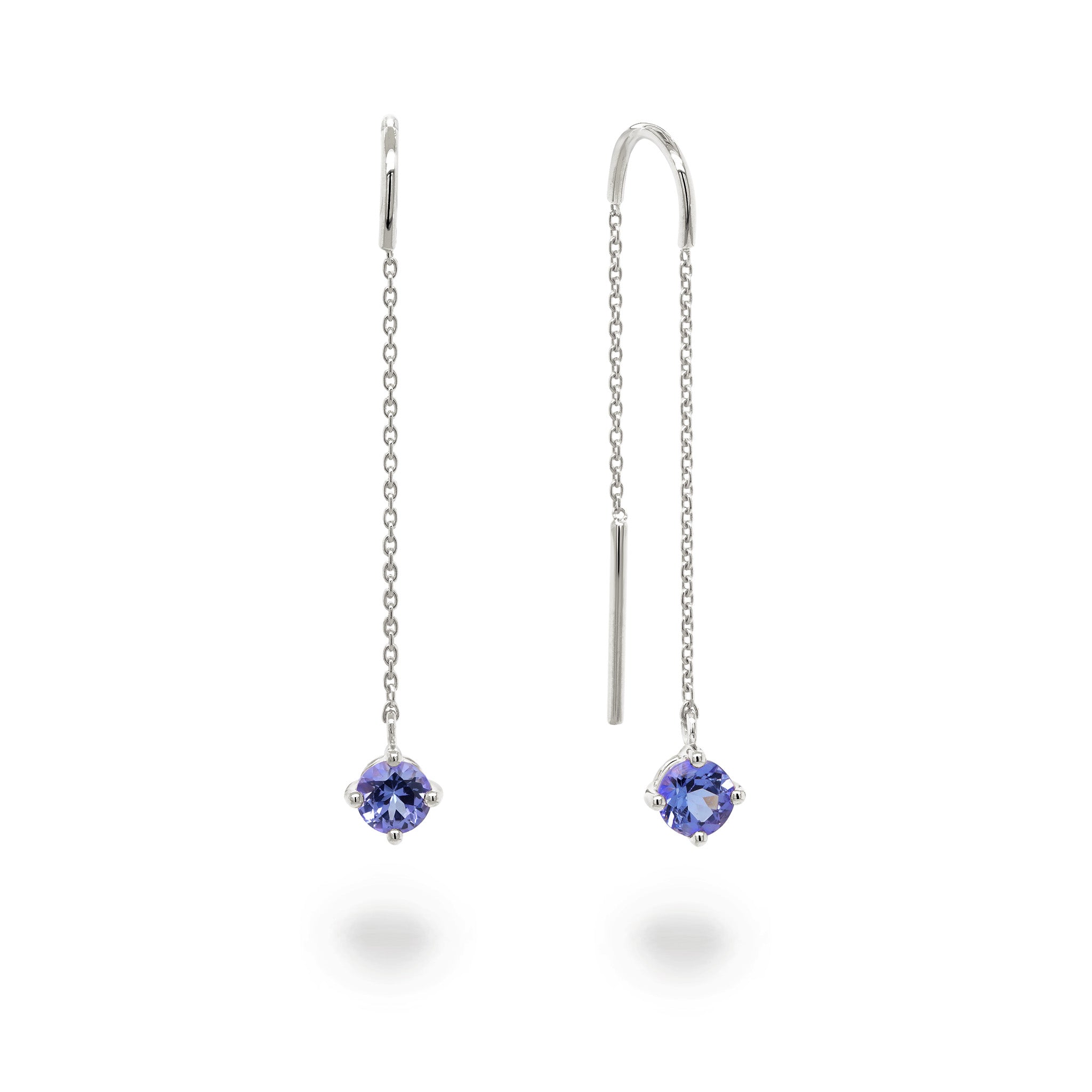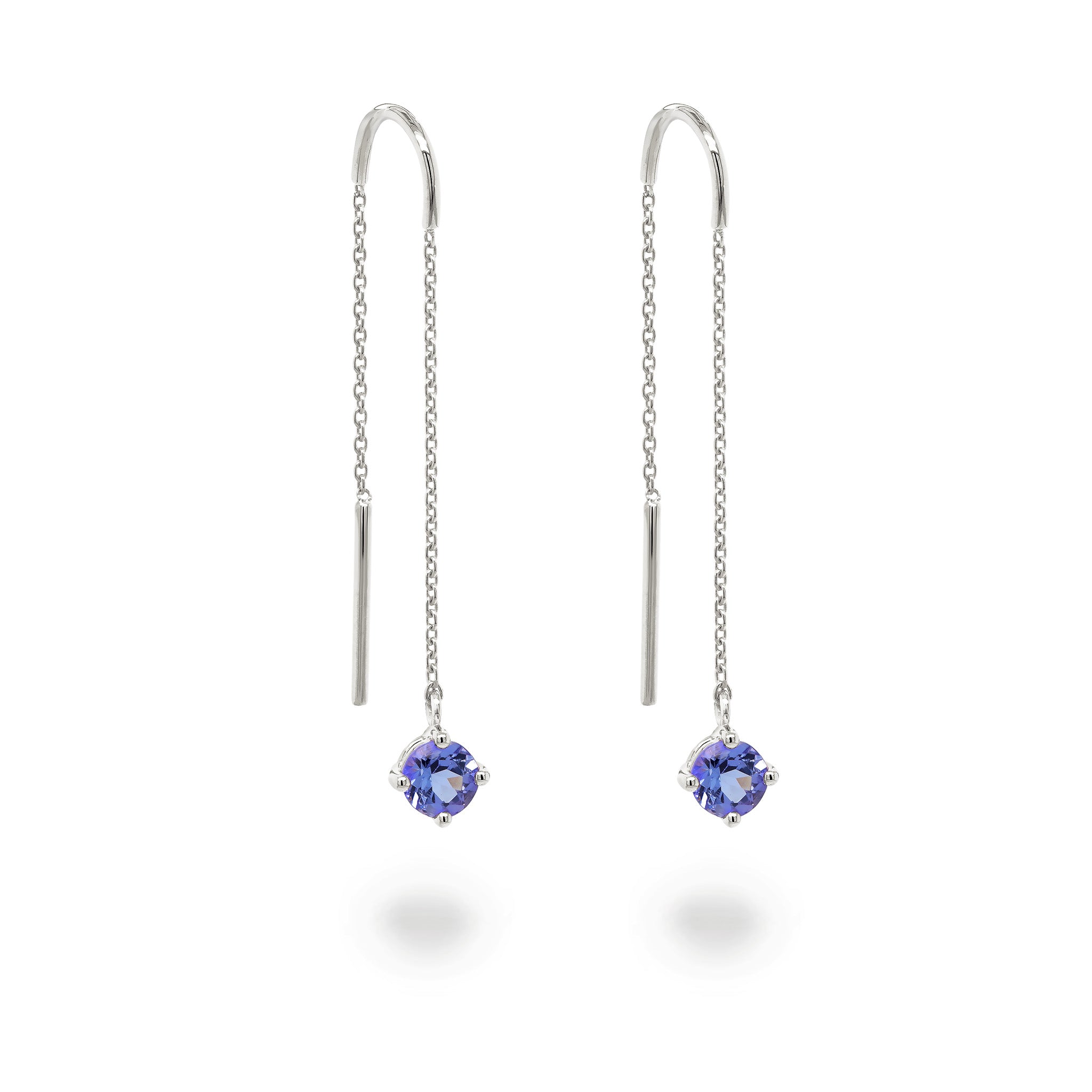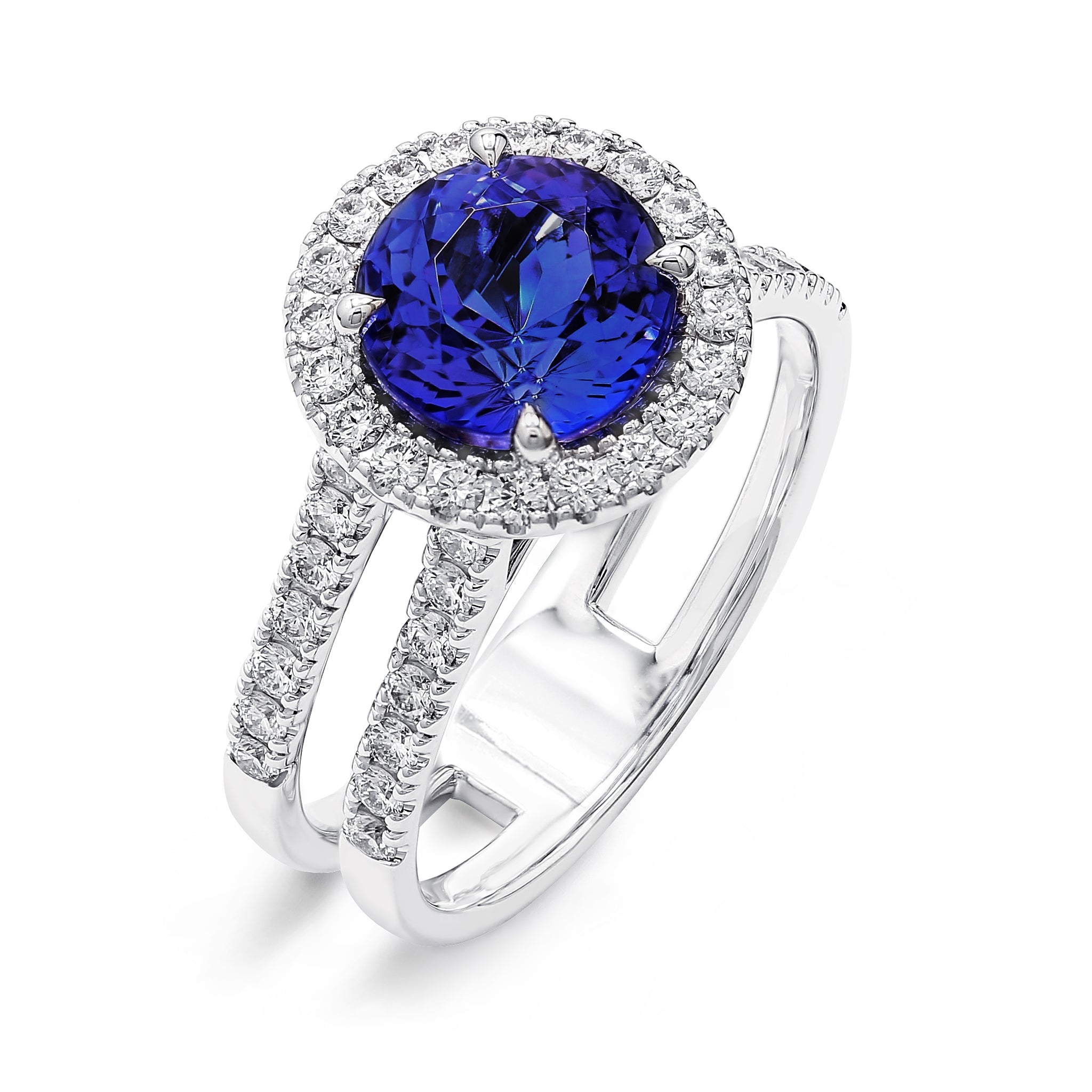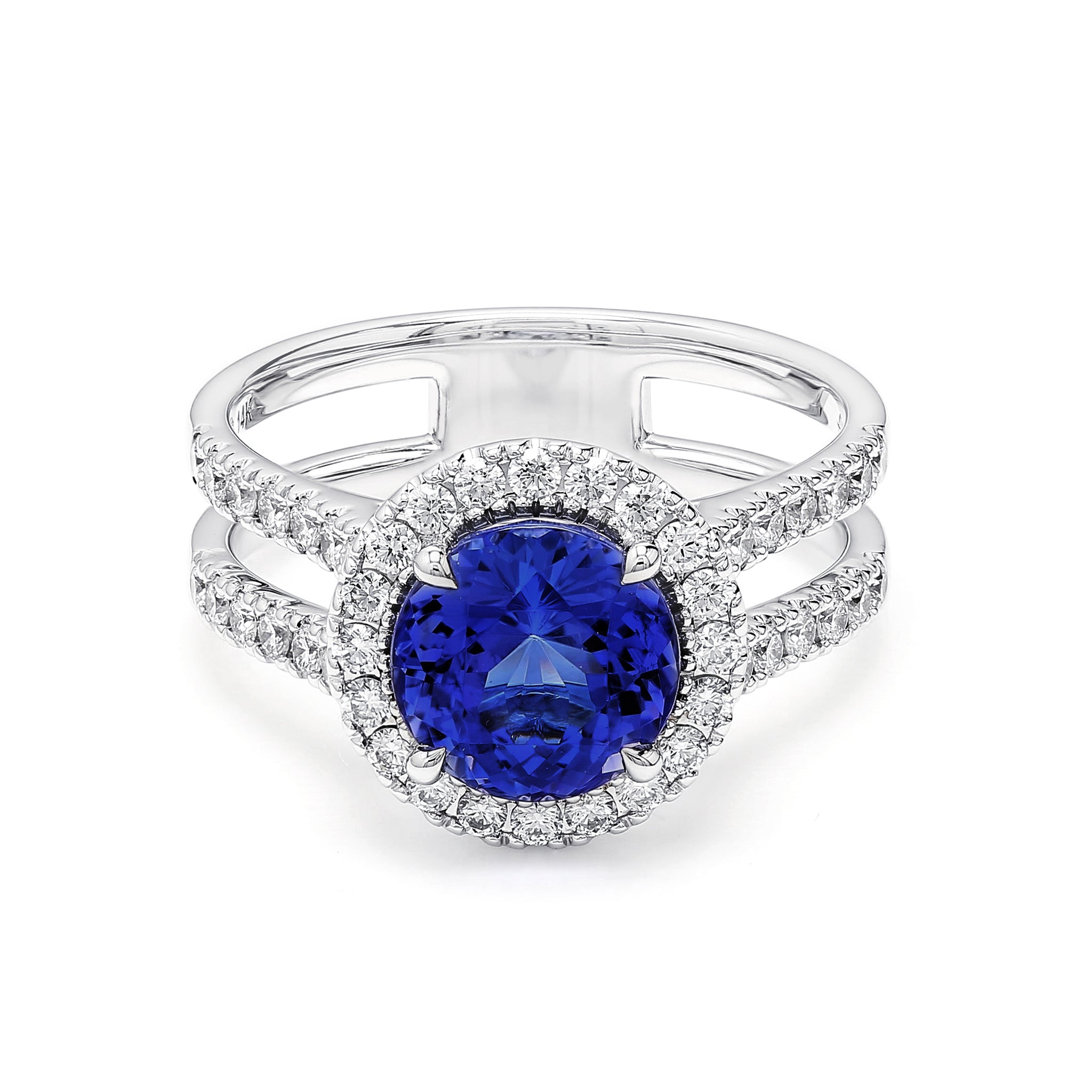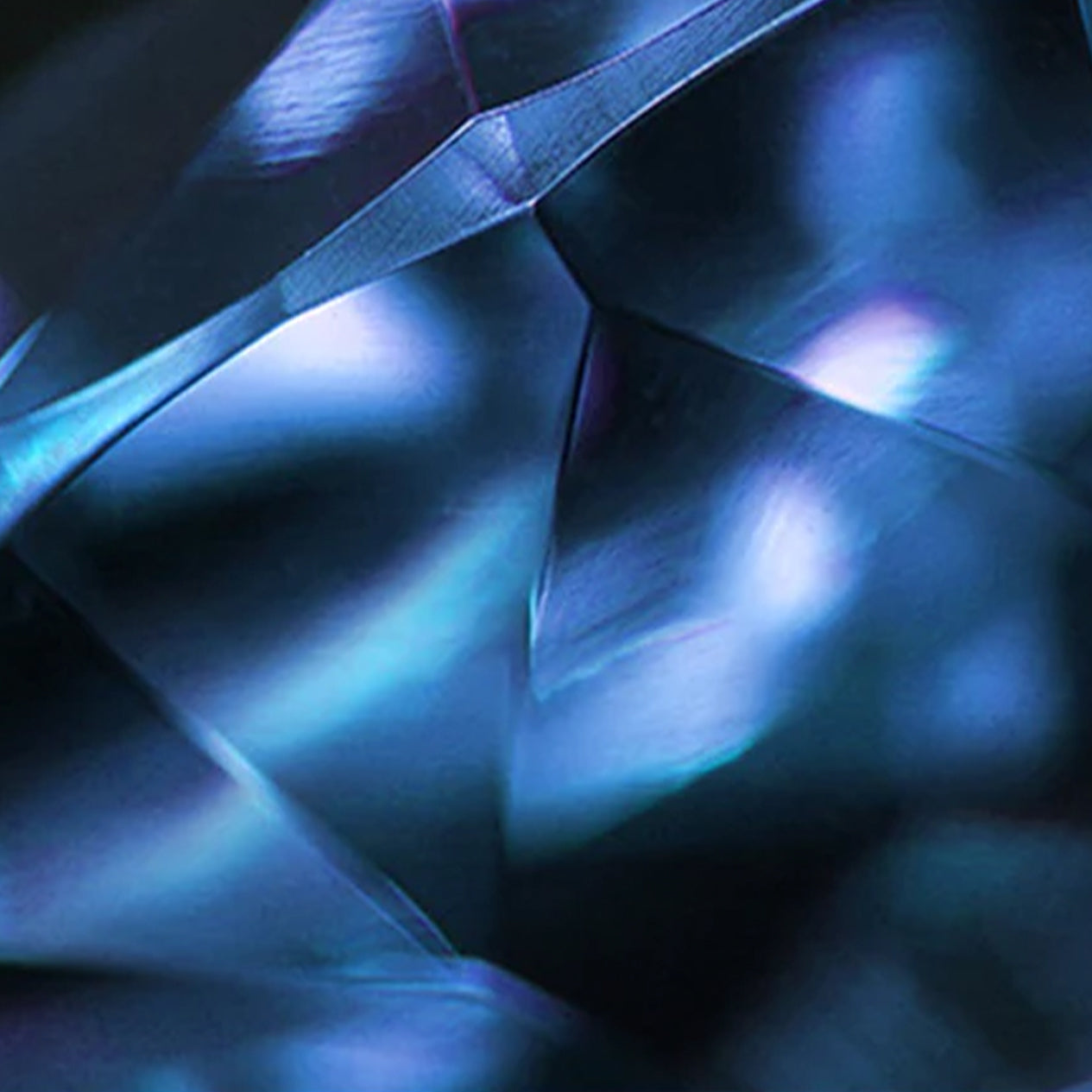
The tanzanite cut
Have you ever looked at your tanzanite jewellery creation and noticed a beautiful sparkle as you view it from different angles? This sparkle exists because of the way in which the stone has been cut. Cutting is one of the 5Cs of value, and is the only C that is determined by man, and not by nature.
A tanzanite’s cut refers to the proportion and brilliance of its facets. Cutting requires years of experience and a wealth of knowledge to master. An excellent cut can improve the appearance of a stone with low colour and clarity grading, while a poor cut has the ability to impair a beautiful gemstone.
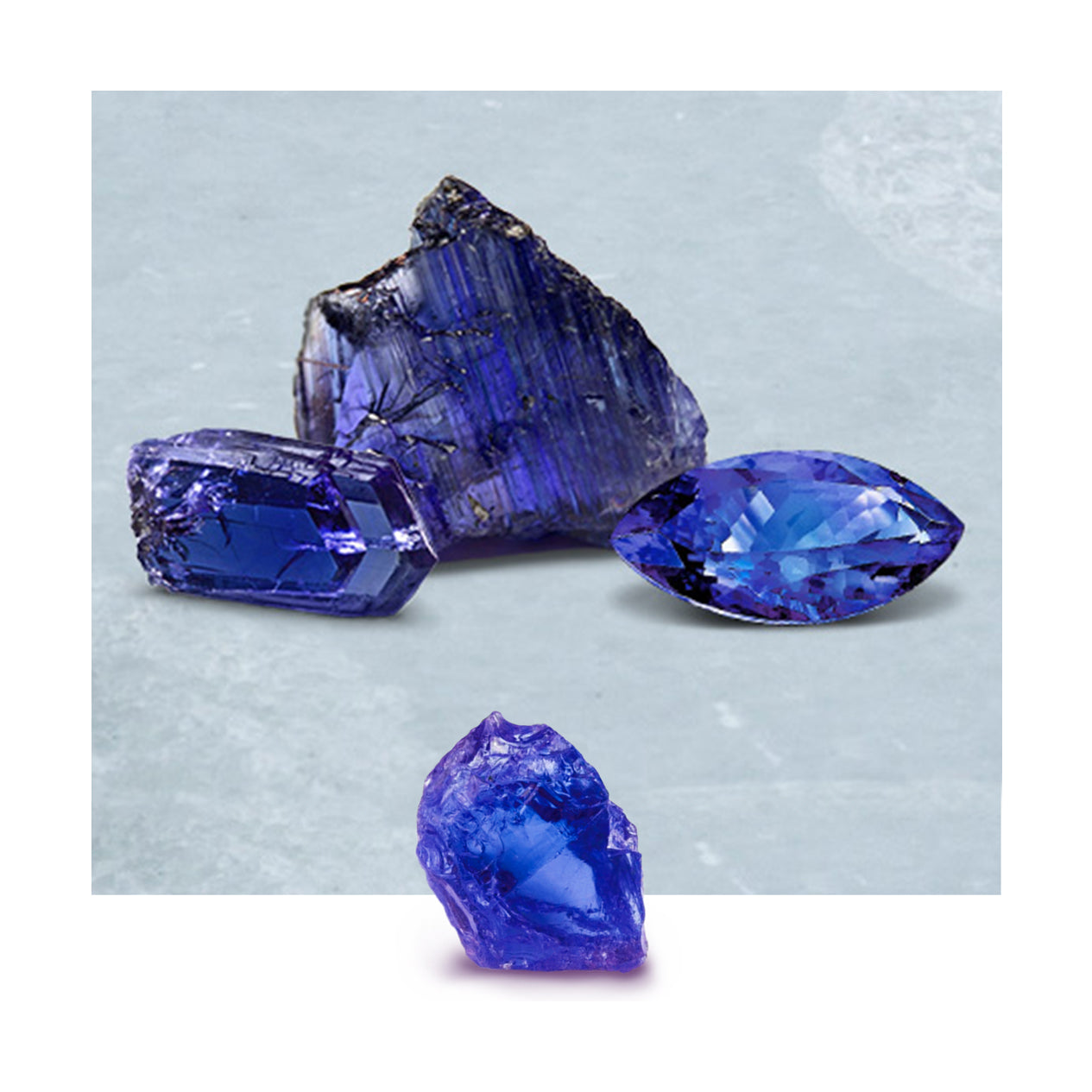
It is extremely important for a tanzanite gemstone to be expertly cut, as the cut impacts not only the brilliance and fire of your stone, but also the overall quality. A fine cut tanzanite will typically yield up to 30% premium over stones cut with weight maximization techniques. Cut is thus a very important factor to consider when purchasing tanzanite. A poorly cut tanzanite can make the best quality gemstone look inferior and often gemstones are cut to maximise their weight and not their beauty. All Shimansky Ayanda Queen of Tanzanite loose stones, as well as the stones set in tanzanite jewellery creations, are cut to perfection, ensuring the best quality tanzanite available.
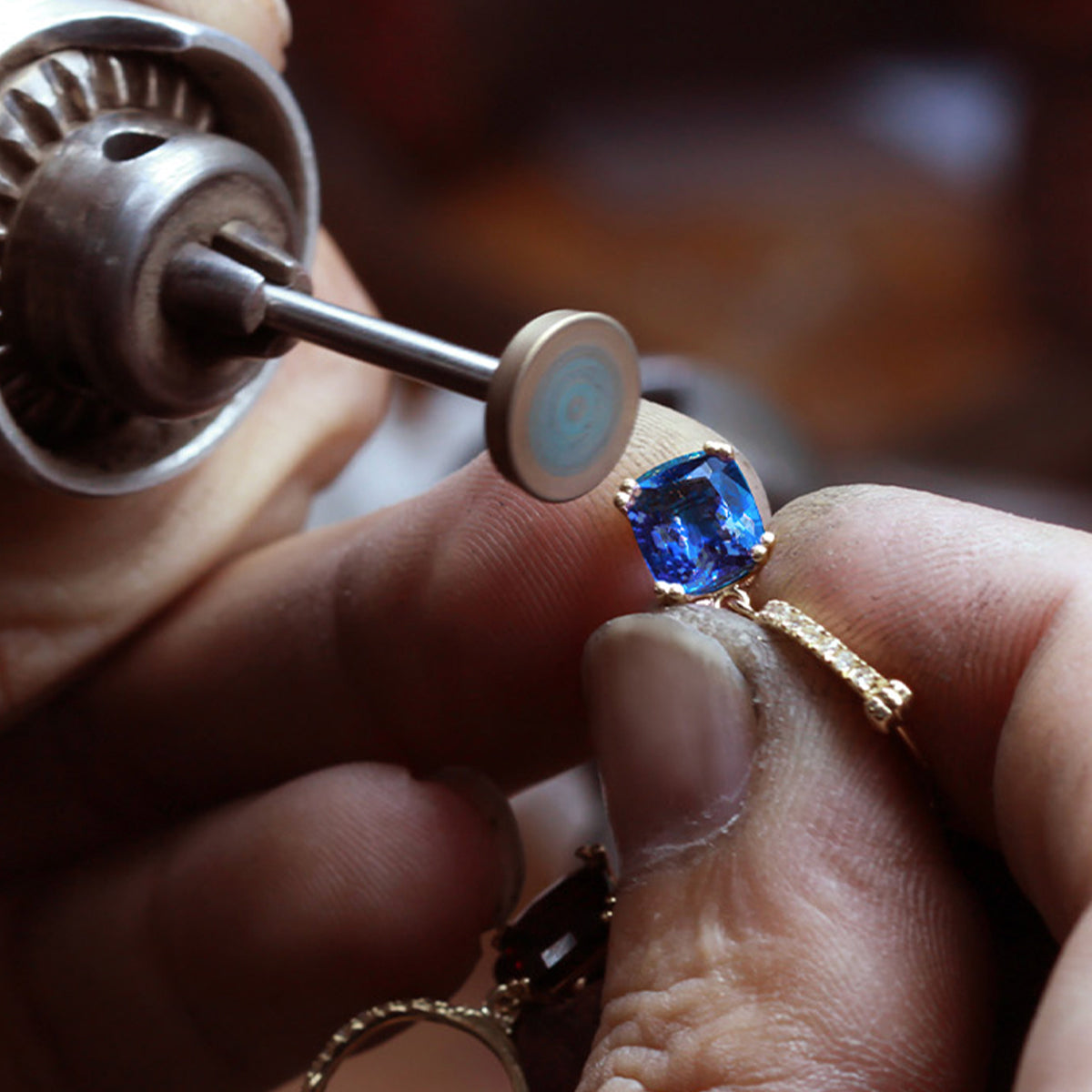
The cut of the gemstone goes beyond its shape (for example a round, oval or pear shape stone). It refers to the brilliance yielded by the facets cut into the stone. It takes a cutter years to perfect the technique of cutting tanzanite: tanzanite is softer than diamonds, which means that it’s more easily damaged during the cutting process, and thus requires extra care and precautions.
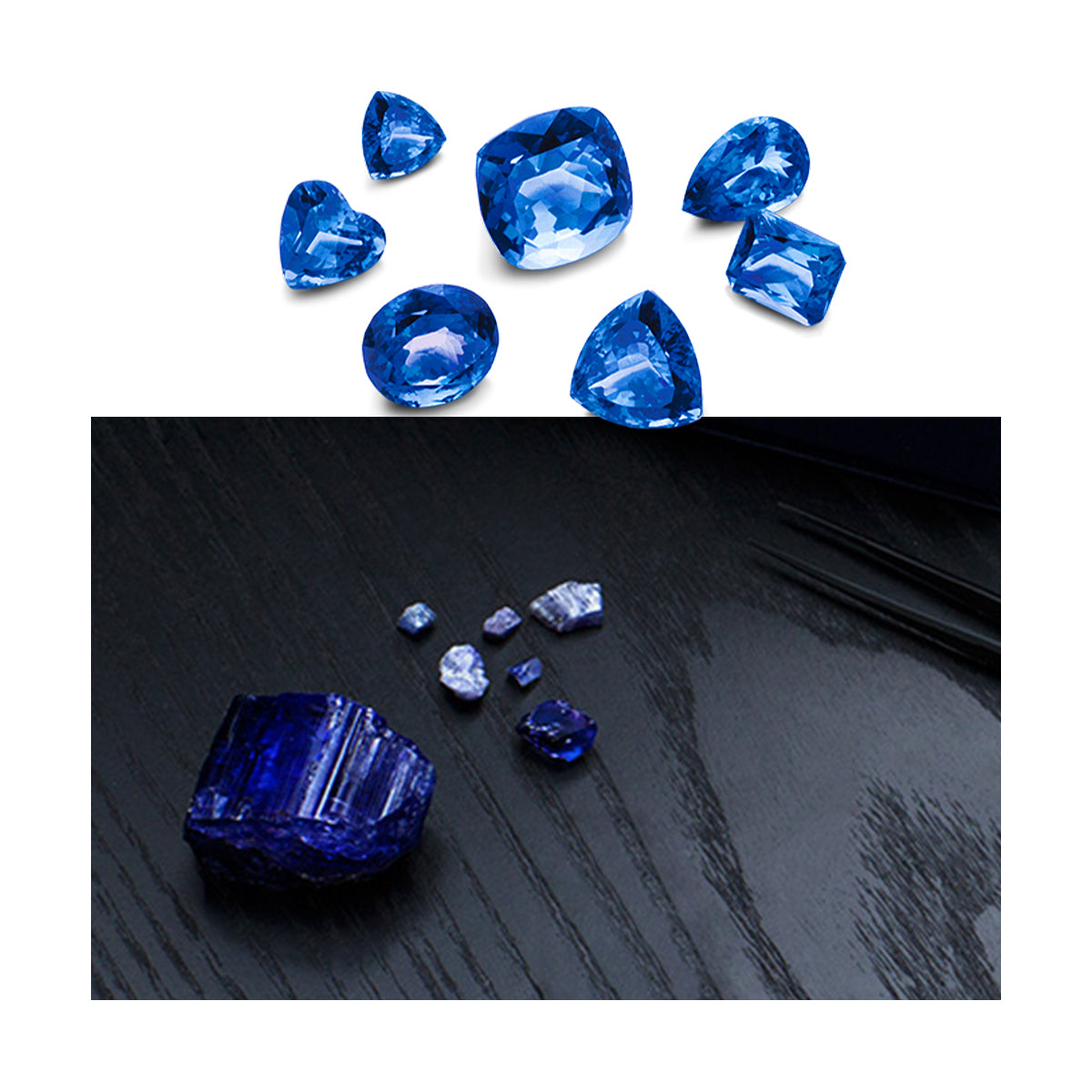
There are a few things to be aware of when looking at a tanzanite’s cut, the first of which, is windows. A window is a “dead” area in the middle of the gemstone which resembles a hole or empty space, as it has no light reflection. Windows come about when the stone is cut too shallow, or when it is cut too heavy in the back. Some tanzanite gemstones are cut with bulges in their pavilions to maximise the stone’s weight retention. This weight-saving technique ensures a larger carat weight, but has a negative impact on the cut grading, as a tanzanite cut for weight has to sacrifice some of its beauty. Even a tanzanite of beautiful colour can appear lifeless if it has been cut for weight preservation, making this a cutting technique best avoided.
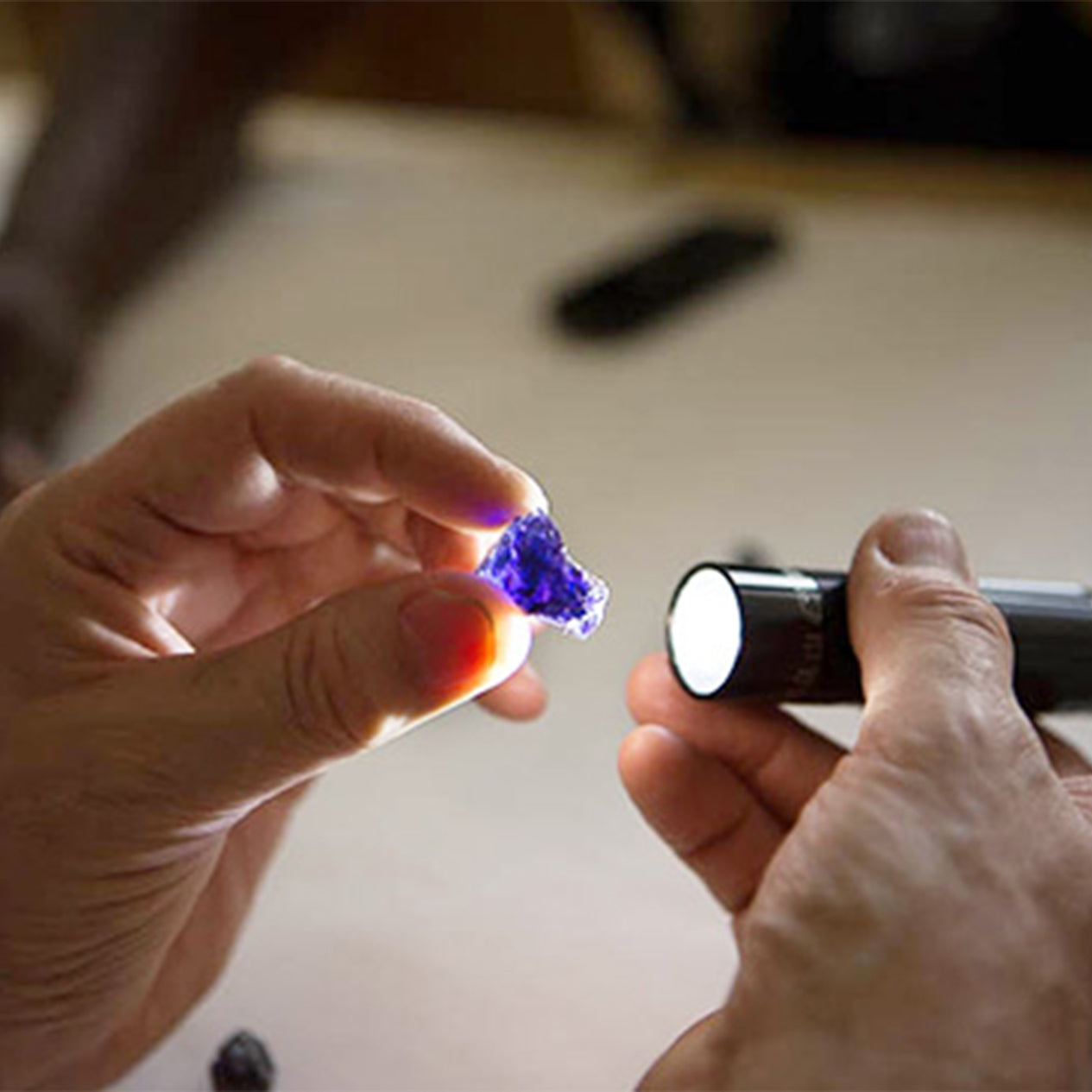
Tanzanite stones cut for weight maximisation are typically more difficult to set in a jewellery creation because they are more likely to have a thicker girdle and a bulky pavilion. Cutting for weight also increases the risk of breakage during the setting process. Shimansky Ayanda Queen of Tanzanite gemstones are cut for maximum brilliance, and to enhance their beauty, not to maximise their weight. When buying tanzanite in South Africa, be sure to purchase from a reputable jeweller that values a gemstone’s brilliance more than its weight preservation. Ask to see the gemstone’s certification, and be sure to ask if you are uncertain about any of the information pertaining to its cut.
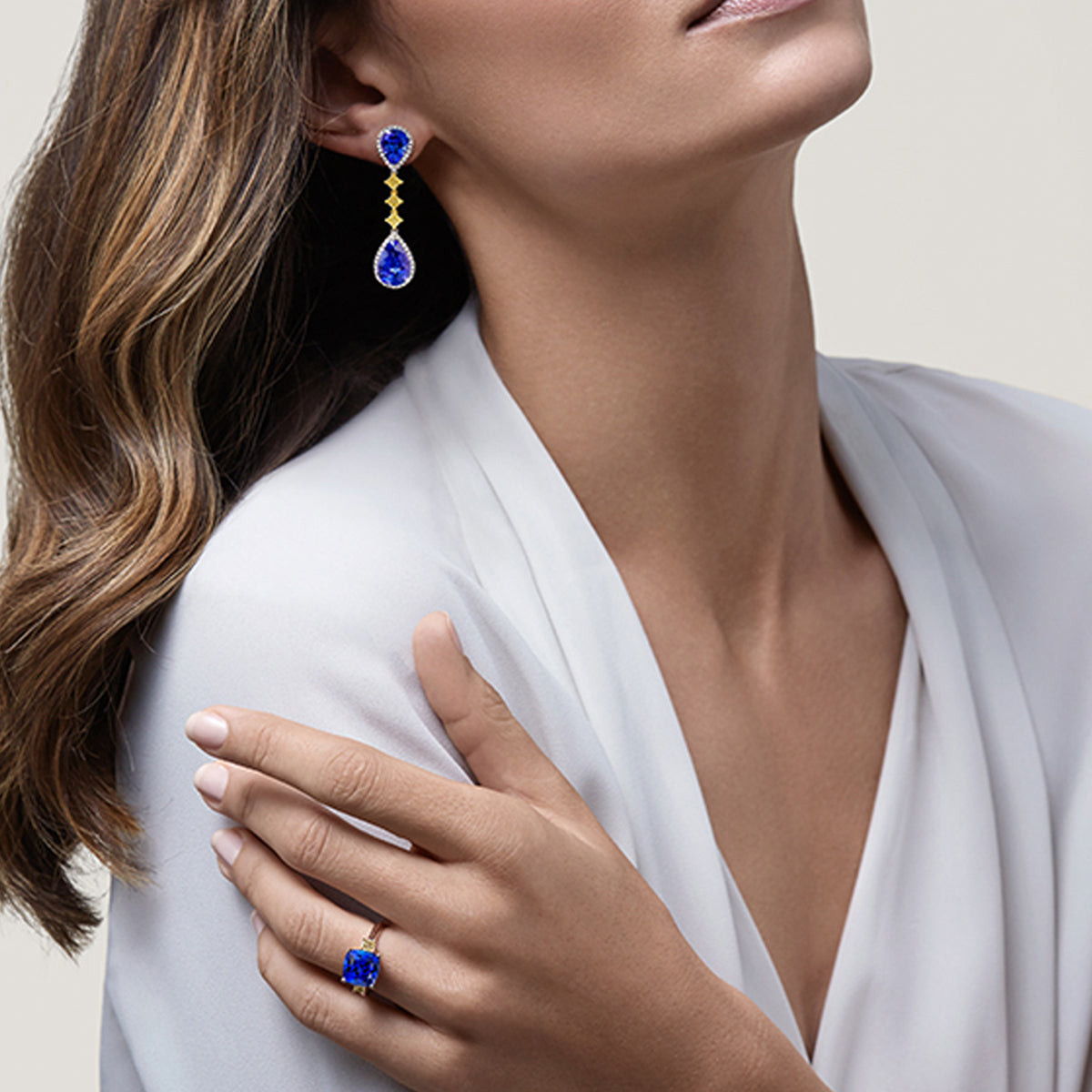
An excellent cut ensures that the stone’s facets reflect light to create maximum brilliance and scintillation. To create an excellent cut, the angles on the table of the stone, and the angles of the pavilion of the stone must be perfectly proportioned and calibrated. When wearing your tanzanite ring or tanzanite necklace, you should notice a “bouncing” of light, or sparkling, with your movements. The more the gemstone sparkles, the better it has been cut. If tanzanite is cut too deep or too shallow, the radiance will deflect through the sides of the stone, thus limiting its brilliance. Depth percentage is calculated by dividing the depth of the stone by the stone’s girdle diameter. The ideal range is 60% to 80%.
Only fine cut stones are selected for Shimansky tanzanite jewellery creations. As such, Shimansky stocks only the best cut Ayanda tanzanite, and all tanzanite gemstones are graded for their cut as part of the certification process.
The true value of a Shimansky jewellery creation is only realised when it is worn by the person it is meant for.
Featured collection
TANZANITE
